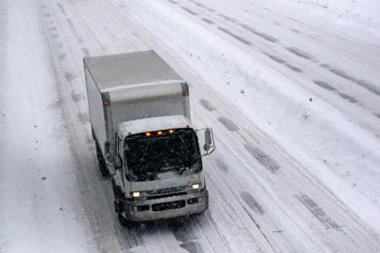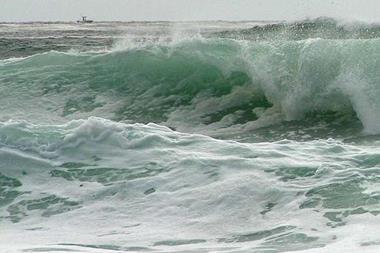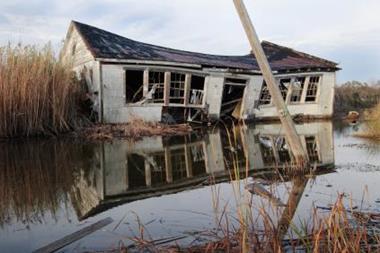Karin Clemens asks whether the current market is sustainable
The worldwide weakening of property/casualty markets is continuing unabated. Price declines are evident across all major markets and business lines. Average rates are falling by high single-digit or even double-digit levels.
In the US the market remains very soft, with an expectation that market competition will stiffen further and rate declines will continue to accelerate. Europe, Germany, and the UK have seen the largest rate falls, although there are some signs that the weakening in rates might start slowing. Asia-Pacific, however, continues to be one of the most challenging regions with no hint that competition is likely to subside. Price has so far been the main differentiator yet there is mounting evidence that companies are increasingly willing to relax terms and conditions and to further increase coverage.
Year-to-date reported results, nevertheless, indicate another good year for 2007. The key question, however, is whether companies can sustain continued positive earnings momentum through 2007 and 2008. In most property/casualty markets revenue growth remains elusive and companies are expected to prune top lines during the weakening phase of the cycle to preserve their bottom lines.
Many insurers have also significantly invested in enterprise risk management programmes, including underwriting controls, which should provide better insulation from the cycle than was the case in the past. However, the industry’s history of active cycle management is disappointing and it is still too early in our view to determine whether this time around the property/casualty industry will be more successful in navigating the current cyclical downturn. The commitment of insurers to adhere to appropriate prices, terms, and conditions will therefore be a key ratings driver, and ratings pressure could arise if Standard & Poor’s expectations of relative earnings resilience were not met or if risk controls proved to be ineffective in a less favourable environment.
A hard or soft landing?
The main question market commentators, brokers, insurers, and insurance buyers are grappling with at present is whether this cycle will have a soft landing or whether we are in the midst of a significant and protracted downward trend. Standard & Poor’s expects the weakening phase of the cycle to continue through 2007 and is of the view that markets might start bottoming out by the end of 2008. Much of this will depend on trends in the severity and frequency of claims, particularly with respect to natural disasters. However, in the absence of a market defining event, we do not foresee a significant reprieve from current adverse market conditions for 2007 and into 2008.
North America
This year is already materialising as much tougher than 2006, with the downward momentum of the pricing cycle showing no signs of relenting. In addition, competition in industrial lines insurance is starting to shift toward broader coverage and a weakening in terms and conditions. For the property/casualty industry in North America as a whole, the combined ratio should deteriorate by about five percentage points to approximately 97%, which would still make it one of the market’s strongest years. The ratio for commercial lines carriers is expected to remain slightly below the industry average.
Chart 1: US Property/casualty sector combined ratio
Source: ISO
The commercial lines pricing environment continues to deteriorate. As measured by the quarterly market survey conducted by the Council of Insurance Agents & Brokers (CIAB), the improvement in the rate environment following Katrina has reversed, and the industry is now entering new territory with year-on-year falls reaching double digits (12%) in the second quarter of 2007 (see chart 2). These market surveys are reasonably instructive indicators of the direction in which pricing is headed, so the accelerated rate of decline is not encouraging and points toward increasingly competitive pricing in the second half of 2007 and into 2008. Moreover, pricing for property insurance in CAT prone areas has leveled off and the divergence between commercial property rates and those of the major casualty lines that opened up post-Katrina has completely disappeared.
“In the absence of a market defining event, we do not foresee a significant reprieve from current adverse market conditions for 2007 and into 2008
Karin Clemens is a director of Standard & Poor's
Chart 2: US pricing trends for all commercial lines
Source: CIAB.
Germany
The German property/casualty market remains dogged by overcapacity, whereas demand for the majority of business lines is maturing or already stagnating. In 2006, the industry combined ratio showed signs of the market softening, but was still a highly respectable 93%. In 2007, we expect the combined ratio to weaken up to 6%, reflecting the impact of windstorm Kyrill, continued intense competition in motor insurance and industrial lines insurance, and the expectation that the severity and frequency of claims will return to more normal levels.
Chart 3: Germany property/casualty gross combined ratio
Source: German Insurance Association, Standard & Poor’s estimates
The industrial lines market entered its fourth consecutive year of softening in 2007, but we are of the view that the fall in rates is likely to decelerate. Rate attrition in industrial property insurance, however, has not reached the same dimensions of previous’ cycles. During the last soft cycle between 1994 and 2001, rates had dropped by more than fifty percent (as measured by premiums in per mille of sums insured), recovering by about one-third during the hardening phase of the cycle (2002-2003). Competition has intensified again since 2004, mainly focusing on price, but amendments of terms and conditions are also available. Local capacity remains abundant and is further increased by foreign players such as Arch, QBE, and Royal & Sun Alliance, which have expanded their market presence.
Yet, property lines writers have been reporting very healthy combined ratios, having benefited from an exceptionally low number of major claims and correspondingly low claims severity. This trend, however, has turned since 2005, with the number of major claims having grown significantly. The segment’s gross combined ratio reflects this development, having deteriorated to 87% in 2006 from 81% in 2005 and from a stellar 70% in 2004.
Chart 4: Germany property industrial lines gross combined ratio
Source: German Insurance Association, Standard & Poor’s estimates
Windstorm Kyrill is expected to have cost the industry more than €2bn and will likely add seven percentage points to the gross combined ratio in industrial property and even 18 percentage points in commercial property lines. Nevertheless, the industry still expects to report an underwriting profit for full-year 2007.
UK
The UK market is one of the most competitive in Europe, particularly with regard to pricing. The combination of strong profitability, exceptionally low catastrophe activity, and new players coming to the market has significantly increased competition, especially as many insurers had enjoyed some room for maneuver before breaching their technical rates. In particular, commercial property has been under significant price pressure, while rate reductions in general liability have started to slow.
“The German property/casualty market remains dogged by overcapacity
Karin Clemens is a director of Standard & Poor's
The Association of British Insurers (ABI) expects recent floods to cost the industry in excess of £3bn. Together with Kyrill, which was reported to have cost British insurers £350m, these losses could add nearly 40 percentage points to the industry’s property gross loss ratio for 2007 and more than 10 percentage points to its overall gross loss ratio for the year. It is therefore probable that the market’s underwriting result will be in the red for the year. We expect pricing pressure in property insurance to decrease following the latest floods, although the swing factor may well be the response of reinsurers to these losses.
Chart 5: UK property/casualty net combined ratio
Source: Standard & Poor’s
Australia and New Zealand
The Australian and New Zealand markets remain mature, with limited growth opportunities. Profitability for Australian property/casualty insurers started to moderate in 2007, suffering from a relatively large-scale flood event in the state of New South Wales on top of continued competitive pricing. However, Australia and New Zealand insurers reported underwriting surpluses mainly due to good management of claims and improved economies of scale.
Insurers have also opted to seek growth outside of Australia and New Zealand or from consolidation. While companies like QBE have pursued this strategy for some time, some insurers have only recently started to expand through acquisitions in overseas markets. At the same time, other insurers have opted to consolidate locally. Although successful integration of acquisitions will be a key sensitivity, consolidation in the domestic market may bring some pricing stability.
The impact of competitive premium rates is felt in the New Zealand market with less than one per cent growth in gross written premiums over the past year. The commercial lines market in Australia and New Zealand continues to soften, and we believe that reductions in price are likely to continue for the remainder of 2007 and 2008. This is offset somewhat by modest premium increases in the personal lines sector on the back of storm and flood events. Although extreme weather conditions will remain a concern for the industry as a whole, most companies are well capitalised and reserved, with conservative reinsurance and reserving processes.
Return to a normal claims environment could add pressure
For many property/casualty markets 2007 marks the fourth consecutive year of softening rates. Reported results, however, have nevertheless been remarkably strong. Part of the apparent stability in earnings reflects that pricing reductions have not yet fully filtered through to earnings. Standard & Poor’s believes that it might well take until 2008 for price reductions and looser terms and conditions to start biting into reported results. Moreover, many companies are offsetting margin deterioration by releasing claims reserves on their books for business written in previous years, particularly in the 2003-2006 period. In addition, a number of players have launched far-reaching restructuring programmes, with the first benefits starting to flow through profit and loss accounts.
One of the most important drivers of the improvement in underwriting results, however, has been the apparent improvement in claims environment. Taking Germany as an example, the increase in claims expenditure was almost stagnant in 2006 and 2005 (see chart 6). This is mainly due to a continued decline in claims frequency over the past few years, in particular in the important German motor insurance market. There is evidence, however, that this trend is turning and the likelihood of a less benign claims environment is expected to put further pressure on insurers’ ability to demonstrate continued positive earnings growth.
Chart 6: Germany increase in claims incurre
dSource: German Insurance Association
“Most companies have significantly reduced their exposures to catastrophe prone areas
Karin Clemens is a director of Standard & Poor's
Catastrophe losses: will 2007 be a repeat of 2005?
With worldwide insured losses totaling $15.9bn, 2006 was an exceptionally benign year in terms of catastrophe damages. In 2007, however, property/casualty insurers will not escape as lightly. Already in January Europe suffered under Kyrill, its worst windstorm since Lothar and Martin in 1999. Germany, the UK, and the Netherlands were the markets hit hardest, but the storm was also unusually widespread, even extending to the Czech Republic and Poland. Germany had to bear the brunt with the ultimate industry loss expected to significantly exceed €2.0bn. The UK non-life insurance industry has already been hit by three severe weather events this year to date, which will probably lead to an underwriting loss for the market in 2007.
Still, many fear that the worst has yet to come. The US hurricane season officially began on June 1 and forecasts suggest a sharp increase in activity compared with 2006. The Colorado State University anticipates for 2007 17 named storms, five of them intense, compared with long-term averages of 9.6 and 2.3 storms, respectively. At 74%, the possibility of a major (Category 3, 4 or 5) hurricane making landfall this year is also well above the long-term average of 52%.
Following hurricanes Katrina, Rita, and Wilma in 2005, which initially resulted in a wide gap between model-driven loss estimates and actual losses, insurance companies have put significant efforts into further improving their model capabilities and catastrophe risk controls. In addition, most companies have significantly reduced their exposures to catastrophe prone areas. Enhancements should provide insurers with better information, thereby enabling them to control risk exposures more effectively. At the same time, however, improved risk management practices have yet to be tested under adverse conditions resulting from potentially higher frequency and severity of natural disasters in future years. A company’s readiness to manage a surge in catastrophe losses within its acceptable limits will therefore be crucial to sustain current ratings.
Chart 7: US hurricane activity and forecast For 2007
Source: Colorado State University
Profitable growth remains a major hurdle
The task of achieving top-line revenue targets and improving profitability is becoming even more of a hurdle in the current soft market environment. Global premium growth rates have slowed noticeably in recent years, with the major non-life markets reporting flat or even declining premium revenues. According to the latest Swiss Re Sigma study in the US, gross premiums written increased by a very modest 1% (adjusted for inflation) in 2006. In Europe premium growth in real terms was almost stagnant at 0.5%, with the two largest Western European non-life markets Germany and the UK showing declining premium revenues of minus 1.0% and minus 2.1%, respectively. In Australia, non-life premiums even fell by 2.6%.
Further intensifying competition, resulting in continued rate declines across many lines of business and generally weak demand in increasingly saturated markets, is the main reason behind the sluggish premium growth. We expect premium growth in the North American, Western European, and Australian markets to contract further in 2007, thereby intensifying competition for market share. Growth expectations for emerging markets remain robust, but their relative weight within companies’ portfolios is still too low to offset the effect of negative industry trends.
The imperative to remain competitive on pricing will require successful property/casualty insurers to demonstrate superior cost control and operating efficiency. Moreover, companies will have to work continuously to improve the understanding of customer behaviour and to find pockets of profitable growth by effectively aligning product and pricing strategies with customer needs. We will closely monitor companies’ long-term growth strategies as we believe that the temptation to loosen underwriting standards in a low growth environment remains.
Karin Clemens is a director of Standard & Poor’s, www.standardandpoors.com




















No comments yet